mobile View, to the German Version tap the flag
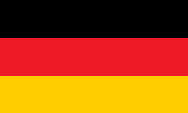

- Republic of Indonesia
- authoritarian presidial republic with multi-party system
- own name: Republik Indonesia
• Flags
• Meaning/Origin of the Flag
• Coat of Arms
• Meaning/Origin of the Coat of Arms
• Aircraft Roundel
• Map
• Numbers and Facts
• History
• Origin of the Country's Name
• Historical flags of former states in the region:
· Majapahit
· Mataram
· Aceh
· South Molucca Islands
· Western New Guinea
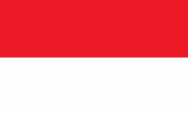
National, merchant and naval flag,
ratio = 3:5,
Source, by: Flaggen und Wappen





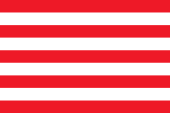
Naval jack,
ratio = 2:3,
Source, by: Wikipedia (DE)



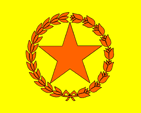
Flag of the president,
ratio = 4:5,
Source, by: Flaggen und Wappen




The in the colours red and white horizontal double striped flag was in use in the independence movement since 1922, by the National Party of Indonesia since 1927 and by the Party of Indonesia since 1931, and for the first time officially hoisted up in context with the declaration of the independence of the State of Indonesia on the 17th of August in 1945. The flag is called "Merah Putih", the "red-white". The colours red and white stand for dualistic term pairs like worldly and heavenly, bravery and purity, or freedom and justice. The flag of the president is even known in the formats 1:1 and 3:2. The colours go ostensibly back to a flag of the prince Jayakatong – the founder of the Madjapahit Empire – from the year 1293. That flag showed nine horizontal stripes in red and white. The red in the flag is defined as follows: HEX = #ED1C24, RGB = 237|28|36, CMYK = 0|100|100|0 = Pantone 1788. The naval jack of the today's Indonesia is a copy of that flag. Indonesia sees itself as a successor of the Madschapahit Empire.
Source:
Die Welt der Flaggen,
Wappen und Flaggen aller Nationen,
Flaggen Wappen Hymnen,
Flaggen und Coat of arms of the Welt,
Wikipedia (EN)

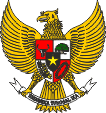
Coat of arms of Indonesia,
Source:
Corel Draw 4

The scutcheon animal of Indonesia is the Garuda, a holy bird of the Hindus. It's 17 wing plumes and 8 tail plumes let distinguish the date of independence. The breast shield is quartered with a heart shield in the middle. The in it depicted symbols mean belief in divine principles, people's sovereignty and national awareness, social fairness and the parity of man and woman. The black heart shield with the golden star symbolizes the readiness for defense. On a saying ribbon between the catches of the Garuda the motto of the state: "Bhinneka Tunggal Ika" → "Unity in Diversity".
Source:
Flaggen Wappen Hymnen

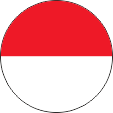
1946–1949,
Aircraft Roundel,
Source, by: Wikipedia (EN)

since 1949,
Aircraft Roundel,
Source, by: Wikipedia (EN)
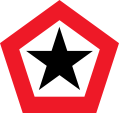
since 1949,
Aircraft Roundel of Army Aviation,
Source, by: Wikipedia (EN)
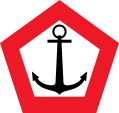
since 1949,
Aircraft Roundel for Naval Aviation,
Source, by: Wikipedia (EN)

Location:
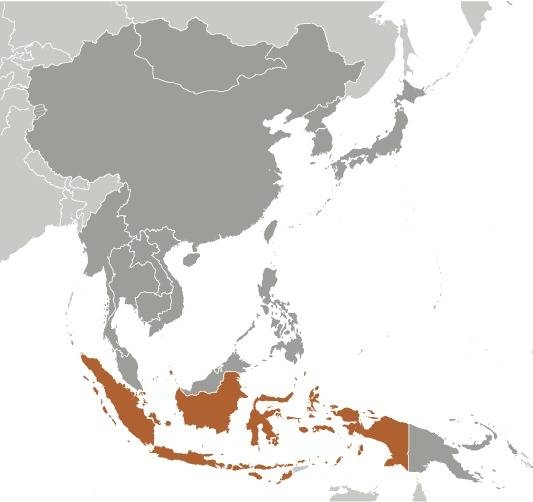
Source: CIA World Factbook
Map of the country:
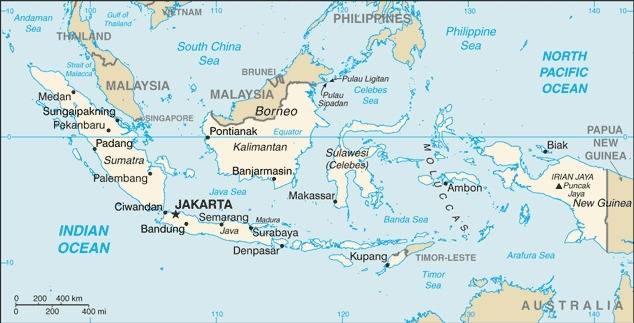
Source: CIA World Factbook

Area: 735.355 square miles
Inhabitants: 273.500.000 (2020), thereof 42% Javanese, 16% Sundanese, 3% Malayans, 3% Madurese
Religions: 87 % Muslim, 7 % Protestant, 3 % Catholics, 2 % Hindus, 1 % Buddhists
Density of Population: 372 inh./sq.mi.
Capital: Jakarta (Djakarta), to 1950 Batavia, 10.562.088 inh. (2020)
official Language: Indonesian (Bahasa Indonesia)
other Languages: Dutch, English, Javanese, Sundanese ... and ca. 700 further languages
Currency: 1 Rupiah (IDR, Rp) = 100 Sen
Time Zone: GMT + 7 h till + 9 h
Source:
Wikipedia (D),
CIA World Factbook

1500 B.C. · first potent civilizations of the here immigrated Mon-Khmer nations, the forefathers of the today's Indonesians in the region of the today's Indonesia/Malaysia
300 B.C. · penetration of Hinduism, later Bhuddism too
ca. 600–ca. 900 · Empire of Srivijaya on Sumatra, Malacca, Jawa, Bali and Borneo
ca. 700–ca. 950 · Empire of Mataram on Jawa
1293–1520 · Empire of Majapahit on all islands in the region, except the Moluccas
since the 13th cent. · penetration of the Islam
1509–1512 · beginning Portugese colonization on Sumatra, Jawa and the Moluccas
1521 · the Spanish expedition of the Portugese Magellan achieves the islands of Indonesia/Malaysia coming from America, Spain claims now the Moluccas
1529 · the Spaniard Saavedra achieves the Moluccas
1529 · Zaragoza Treaty, Indonesia/Malaysia get awarded to Portugal
1586–1830 · islamic Empire of Mataram on Jawa
1599–1609 · the Dutch banish the Portugese and the Englishmen from the Moluccas and appropriate the islands
1602 · formation of the Dutch East India Company which enforces the colonization of the region
1610–1641 · the Dutch banish the Portugese from the whole region except from East Timor
1619 · conquest of Djakarta on Djawa by the Dutch, rename of Djakarta into Batavia, base for further conquests in the whole island's region of Indonesia/Malaysia in the 18th and 19th century
1795 · the British conquest the town Malacca
1798 · the Netherlands take over the Dutch East India Company
1819 · the British conquest Singapore
1828 · the Dutch conquest Western New Guinea
1847 · the British start the colonization of Brunei
1873–1889 · conquest of the Malacca peninsula by the the British
1881 · subjection of North Borneo by
United Kingdom
1886 · Brunei becomes a British protectorate
1888 · subjection of Sarawak by the British
1913 · with the fall of the Sultanate of Aceh is finished the conquest of Netherlands East-Indies
1942 · Japan occupies Netherlands East-Indies
June–September 1945 · expulsion of the Japanese out of Netherlands East-Indies by British and US-American troops (except Sumatra), return of the Dutch
17th of August in 1945 · declaration of independence, proclamation of the Republic of Indonesia in Batavia
1945–1947 · war of liberation, Indonesia against the Netherlands
1947 · Linggadjati Treaty: acceptance of the Republic of Indonesia on Jawa, Madura and Sumatra, withdrawal of all foreign troops, formation of the United States of Indonesia
1947–1949 · civil war between communists, nationalists and separatists, the Netherlands intervene militaryly
27th of December in 1949 · Treaty of Den Haag: granting of independence for whole Indonesia, except Western New Guinea and the South Molucca Islands, transformation of the country into a federation, allegiance to the Dutch crown by the framework of the Netherlands Indonesian Union
24th of March in 1950 · the Netherlands grant independence to the South Molucca Islands, proclamation of the Republic of the South Molucca Islands
17th of August in 1950 · end of the Federation of Indonesia, introduction of the centralist republic
1950–1955 · conquest of the Republic of the South Molucca Islands by Indonesia
11th of August in 1954 · Indonesia terminates the Netherlands Indonesian Union
1st of October in 1962 · Western New Guinea gets handed over from the Netherlands to the UN
1st of May in 1963 · Western New Guinea gets handed over from the UN to Indonesia
1963–1966 · quarrels with Malaysia
1965 · attempted communist coup d'état
7th of December in 1975 · occupation of the Portugese colony of East Timor
17th of July in 1976 · incorporation of the Portugese colony of East Timor as 27th province of Indonesia
1985 · struggles in East Timor
1998 · struggles in Aceh
1991 · struggles in East Timor
January 1999 · struggles on the South Molucca Islands
1999 · plebiscite about independence in East Timor
2000 · struggles in Aceh
2000 · struggles on the South Molucca Islands
2001 · Irian Jaya (West New Guinea) is granted autonomy status
20th of May in 2002 · independence for East Timor (Timor-Leste)
2003 · struggles in Aceh
Source:
Atlas zur Geschichte,
Wikipedia (D),
Discovery '97,
Weltgeschichte

The name "Indonesia" comes from the ancient Greek language and is a combination of the words "indo" (India) and "nesos" (island). A similar procedure of word-creation as it was used in Polynesia, Micronesia or Melanesia. The breakthrough for that word creation came in the year 1884 by the book series "Indonesia" from the German geographer and ethnologist Adolf Bastian.
Source:
Wikipedia (DE)


to 1520,
Flag of Majapahit,
Source, by:
Wikipedia (EN)



The Hindu Empire of Majapahit existed from the end of the 13th century until the beginning of the 15th century. The main area was always the island of Java, which forced the surrounding states into a vassal-state relationship and thus dominated a large area of influence. This included almost all the islands in the region, which now belong to Indonesia and Malaysia, except the Moluccas and Western New Guinea. The invading Islam and inner disputes led to the escape of the last king to Bali Island and to the demise of the whole empire, along going with economic and cultural decline.
Source: Wikipedia (EN)

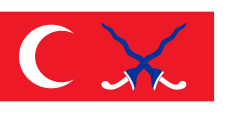
1587–1755,
Flag of Mataram,
Source, by:
Wikipedia (EN)



The Sultanate of Mataram was a kingdom on Java Island, which existed between 1586 and 1830. It and had some influence in the region. It lost in the fight against the spreading Dutch East India Company, became in 1749 a vassal state of the company and ended in 1830.
Source: Wikipedia (EN)

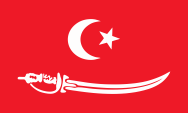
to 1520,
Flag of Aceh,
Source, by:
Wikipedia (EN)



The Sultanate of Aceh was a sultanate in the Indonesian province with the same name. It was a significant regional power in the 16th and 17th century, in constant battle against Johre and the Portuguese. After that began an epoch of decline. Between 1873 and 1903 Aceh was conquered by the Dutch.
Source: Wikipedia (EN), more informations? → click or tap here

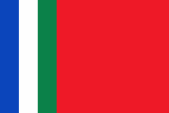
1950–1952,
Flag of South Molucca Islands,
Source, by:
Wikipedia (DE)



The Republic of South Molucca Islands (also: Moluccas Ambon, own name: Maluku Selatan) existed between 1950 and 1952 as an independent republic. In the year 1952 it was occupied by Indonesia.
Source: Wikipedia (DE), more informations? → click or tap here

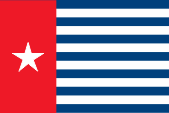
Flag of Western New Guinea,
Source, by:
Wikipedia (DE)



Western New Guinea (also called: Papua Barat, Irian Barat, Irian Jaya) was a Dutch possession until 1961, which was granted self-government in 1961. The country was in 1962 handed over to UN, but 1963 it was annexed by Indonesia. Since then, there are strong aspirations for independence.
Source: Wikipedia (DE), more informations? → click or tap here


![]()
































